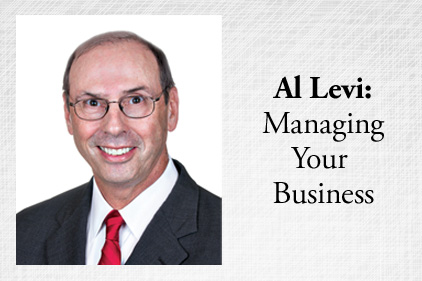Stepping over dollars to pick up dimes
The urge to save money can cause you to miss out on making more in return.


|
The first cautionary bit of advice I received from my dad was that I learn how to “avoid stepping over dollars to pick up dimes.” I was just a kid getting started in the family business. This seemed confusing to me so I asked him, “What does that mean?”
He smiled, gave me a wink, and in a soft and kind way replied: “The urge to save a few bucks can cause you to miss out on big dollars. It can actually put the company at risk. It’s smart to spend wisely, but there are times you have to invest in yourself and your business if you want to make real money and be around for the long haul.
“The trick is to invest wisely and work hard on making that investment pay off. You need to have the mindset that you’ll make the payback happen with hard work. Trust that you can make the results come out the way you want them to be.”
He continued: “There will be times when you’ve had a less-than-stellar year and money may be a little tight. But your trucks don’t care what kind of year you had. All they know is they must get maintained, fixed or replaced. And the few bucks you’d be tempted to save today will assuredly lead to much more costly expenses and missed opportunities. A vehicle out of commission is bound to happen at the very worst possible time … when you’re busy.”
Today, I share with clients that they should think of their trucks as rolling cash registers. When one of them is out of service, the cash register can’t collect any dollars. And then it will be too late to reverse how you diverted money and effort in keeping them up-to-date and running at peak efficiency.
Why does this apply in today’s economy? You might be thinking that times are better now than a few years ago, but they’re not where they were pre-2008. I know that, depending on where you are in the country, things may be slower and money may be tighter than you’d like it to be. But here’s what I know: Your company won’t get healthier if you focus on cutting expenses too deeply or you cut the wrong things in a misguided attempt to save a few dimes.
Investing in the business
Another philosophy my dad shared with me was about stepping up, especially in tough economic times, and investing money in the business. “Business decisions get easier if you act like you’re going to be in business for a while,” he said.
It is tempting to cut out meetings and training sessions. This of course is backwards, because whatever it costs a company to do meetings and training should blow away the expense of having done them. The key here is to have great ongoing meetings and training that move the company forward with its team members being informed, educated and working in synch.
Another typical target for cost-cutting is marketing. But this has a big cost. A company must be growing its call count or risk shrinking calls. Rarely if ever does the call count needle stay in one place.What all healthy companies must do is set the goal of the right amount of calls, from the right customers, at the right time. And to do that, you’ll have to spend money on marketing the right way. The first part of a marketing plan is to have a marketing budget based on a percentage of sales. The goal is to spend it in a way that gives you the biggest bang for the buck. It’s easy to follow the pack and do the same marketing as others. That is just as bad as not investing enough in marketing. This means putting in a sufficient amount of capital to reach a percentage of total yearly sales required to meet your intended budgetary sales goals.
I’m focusing on marketing because for years companies have had a knee-jerk reaction when money gets tight to cut their marketing budgets. This is an example of saving “dimes” at the risk of throwing away “dollars” because your phones are going to go dead or stay dead.
Working with clients, I show them that slow-to-neutral periods of growth in the general economy are actually the best times to engage in intelligent marketing. That’s because less competition is out there to get your ideal customers’ attention.
When you do marketing, make it count. To do this, it’s got to be testimonial-based marketing. You will want to concentrate your firepower by focusing on three main marketing drivers. When you do this, you take your marketing from a buck-shot approach to a rifle-shot approach.
The marketing vehicles I like best are:
- Laser-focused, testimonial-based direct mail.
- Emarketing that leverages great testimonials via powerful email blasts, ezines and a great website. Emarketing also extends to moving up the ranking through improved search engine optimization and pay per click.
- Acquisition of companies that span the “mild-to-wild” spectrum. That means everything from obtaining old phone numbers to buying real companies. It’s the No. 1 best way to grow a company when done correctly.
These are proving to be winning strategies right now. Will they cost some dimes? Yes!
Will they generate dollars? Yes!
HELPFUL LINKS:
Looking for a reprint of this article?
From high-res PDFs to custom plaques, order your copy today!









